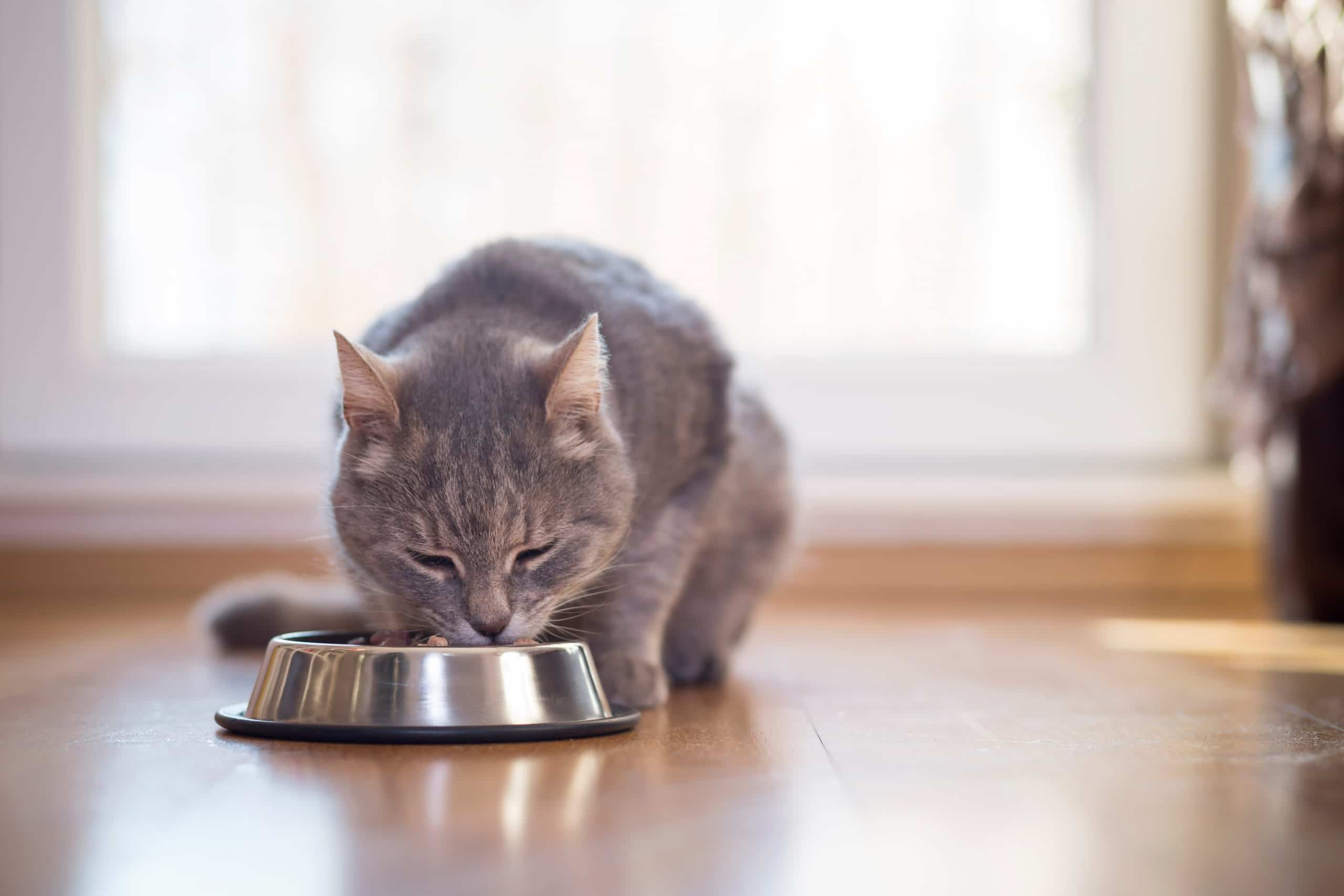Feeding your cat the right food is perhaps the most important thing you can do for your beloved pet’s health. With the wealth of information available, choosing the correct diet for your cat can be an overwhelming experience, not to mention the fact that each cat has its own preferences. No matter how your feline friend prefers to consume their meals, there are a few key things to consider when planning your cat’s diet and feeding schedule.
What is the best diet for your cat?
When making dietary choices for your cat, it is important to remember the history of cats as a species. Today’s domesticated house cats are descendants of the North African wildcat, and, as such, are very much obligate carnivores (their diet requires nutrients only found in meat). With this in mind, cats have several dietary requirements that can only be met with adequate meat consumption when compared to other animals such as dogs.
To keep your cat healthy, it is important to feed them a healthy mix of:
- Animal Protein – Cats consume all essential amino acids through animal proteins such as beef, poultry and fish. Proteins are the building blocks of our bodies and cats are no different. They are essential in building and maintaining hair, skin, muscles and more.
- Fats – Cats use the good fats naturally present in meat and fish to regulate their body temperature, produce the majority of their energy and absorb essential vitamins. Of particular importance are fatty acids such as Omega-3 and Omega-6 which can only be obtained through the food your cat consumes.
- Carbohydrates– Although cats consume carbohydrates less efficiently than omnivores or herbivores do, they still have a place in your cat’s diet. Carbohydrates provide a source of energy for cats while complex carbohydrates can play a part in maintaining their intestinal function.
- Water-Water is an essential component of every cat’s diet, and it is very important that they always have access to clean fresh water. Cats are unique in that they have evolved to consume a high percentage of their water intake through the food they eat. To this end, wet cat food products are a great addition to your cat’s diet, helping them to stay hydrated while they eat.
It’s important to remember that each cat will have different tastes and preferences, be on the lookout for signs their current diet isn’t working for them and make sure to transition any dietary changes properly.
How often should you feed your cat?
In nature, a cat will eat many small meals throughout the day as they find and catch prey such as mice. However, as house pets, the feeding habits of your ferocious feline will be determined by your schedule rather than the speed of their paws.
Kittens aged six months or younger should be fed four times a day, as during this rapid growth phase they expend much more energy. For adult cats, this can be decreased to two or three times a day.
You can also choose to leave dry food out so your cat can graze and snack as they wish throughout the day. Keep in mind that while your cat will no doubt appreciate this, they may also be more likely to overindulge and eat more than they should. If you see them gaining weight, consider switching to a set meal schedule.
How much should you feed your cat?
You should first consider the feeding instructions provided by your chosen cat food, which should include a handy feeding guide. This will break down the recommended serving amount by your cat’s weight and age. Beyond this, it is also important to consider the lifestyle of your feline when deciding portion sizes, as well as any weight changes you may be noticing.
As your cat’s consumption needs will change with age, it is important to also adapt their diet over time. By staying aware and monitoring their weight you can help keep them healthy and happy. Remember that if you are concerned about a change in how much or how little your cat is eating, always seek advice from your vet.
Here are some tips for keeping your cat happy and eating well
- Use a shallow bowl– Cats like to be able to see around the room as they eat, as well as keep their whiskers out of their food.
- Avoid plastic feeding bowls– They can pick up odours that may be off putting to your cat. Try a glass or ceramic bowl instead.
- Consider using puzzle feeders– A puzzle feeder is a toy designed to keep your cat mentally and physically stimulated as they feed by releasing food when played with. Simply load it up with food and watch your cat have some fun!
Quality is Key
Looking for a high quality cat food with no fillers and a simple to understand list of ingredients? Applaws dry food contains 50% premium meat and Applaws wet food contains up to 75%, making them both extremely high quality. By combining the two, you can give your cat a great diet that is sure to result in lots of snuggles and contented purring!
To view the Applaws range, click here. If you do have any concerns about your cat’s health, always consult your vet.

